Anji White Tea is a tea tree variety known for its tender white buds, which give the tea its name due to the prominent white tea fuzz on the leaves. Although it is called “white tea,” it is practically always processed as green tea. This tea is produced in Anji County, Zhejiang Province, and is considered one of China’s finest, with high quality, limited production, and a premium price.
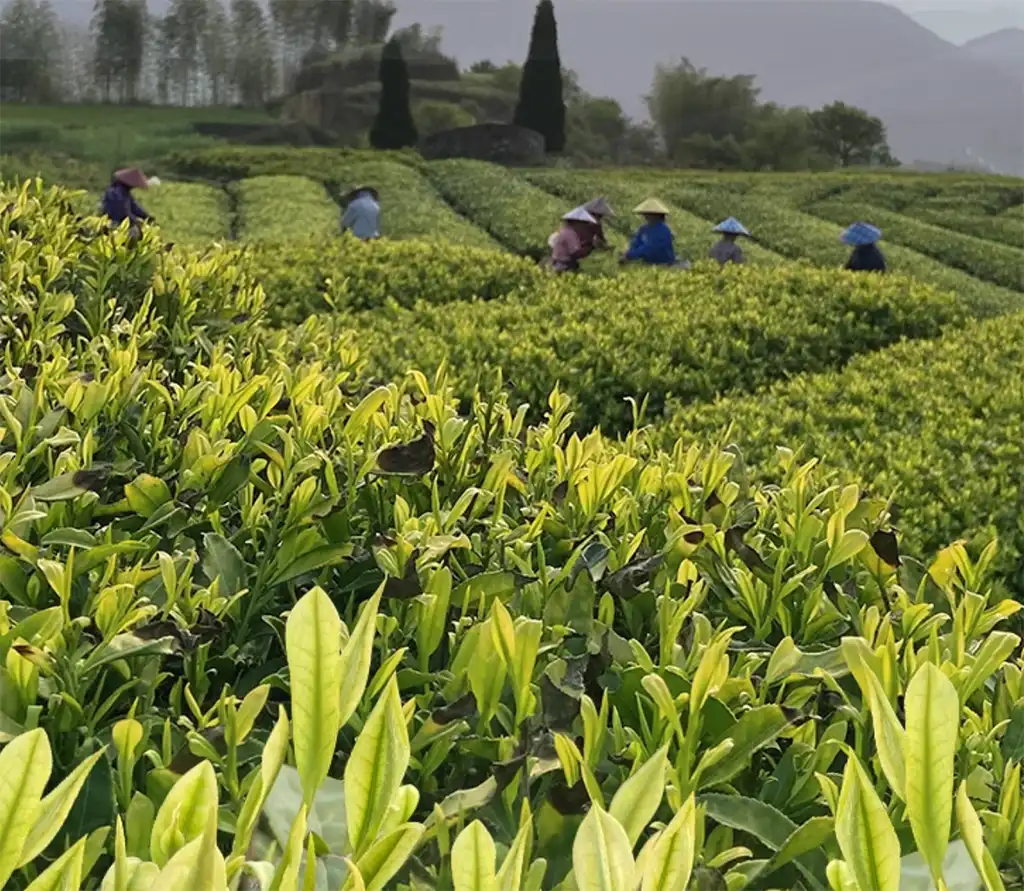
Top-Grade Chinese Green Tea: Anji White Tea
Anji County first discovered wild white tea trees in the 1930s, with only a few dozen trees found. Thanks to the efforts of local people, production reached 20,000 kilograms by 2010, yet it still falls short of demand. Anji White Tea’s buds are pure white in the spring, turning white-green by late spring and completely green by summer, making it truly unique. The tea is best harvested in the spring, yielding tea leaves with a jade-like appearance.
Due to its limited quantity and the legendary health benefits associated with it, Anji White Tea is in high demand and can fetch over 5,000 RMB per 500 grams.
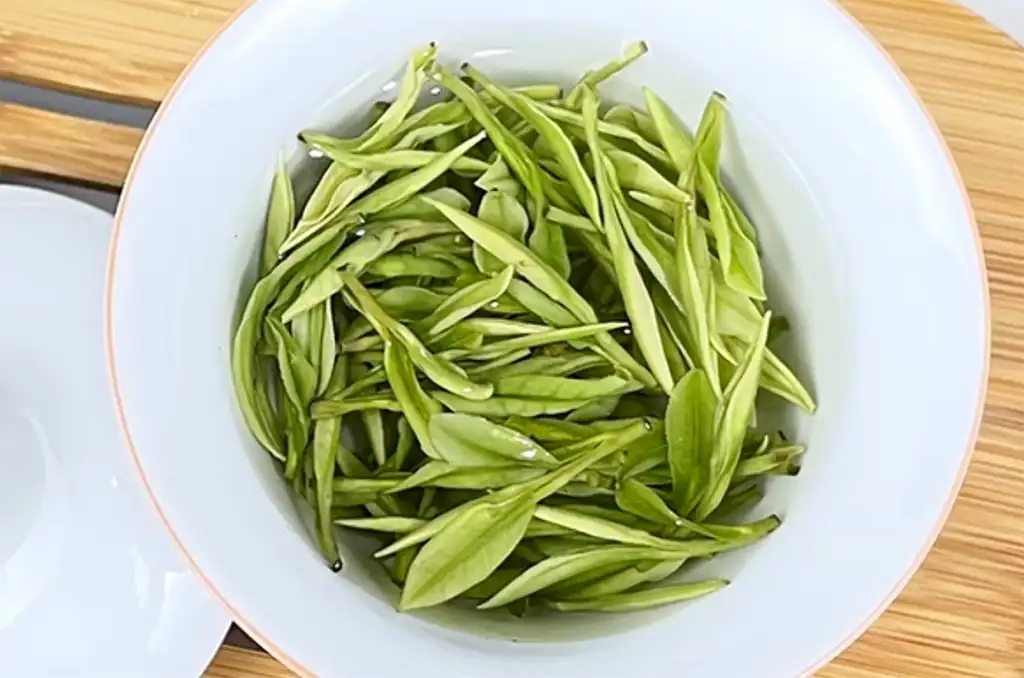
Production Process of Anji White Tea
Anji White Tea is best harvested in the spring, with March being the optimal time. During harvest, tea should be picked in batches, selecting one bud and one leaf, with uniform size and short stems as the ideal criteria. The production process involves harvesting, withering, Panning (pan-frying), drying, and low-temperature storage.
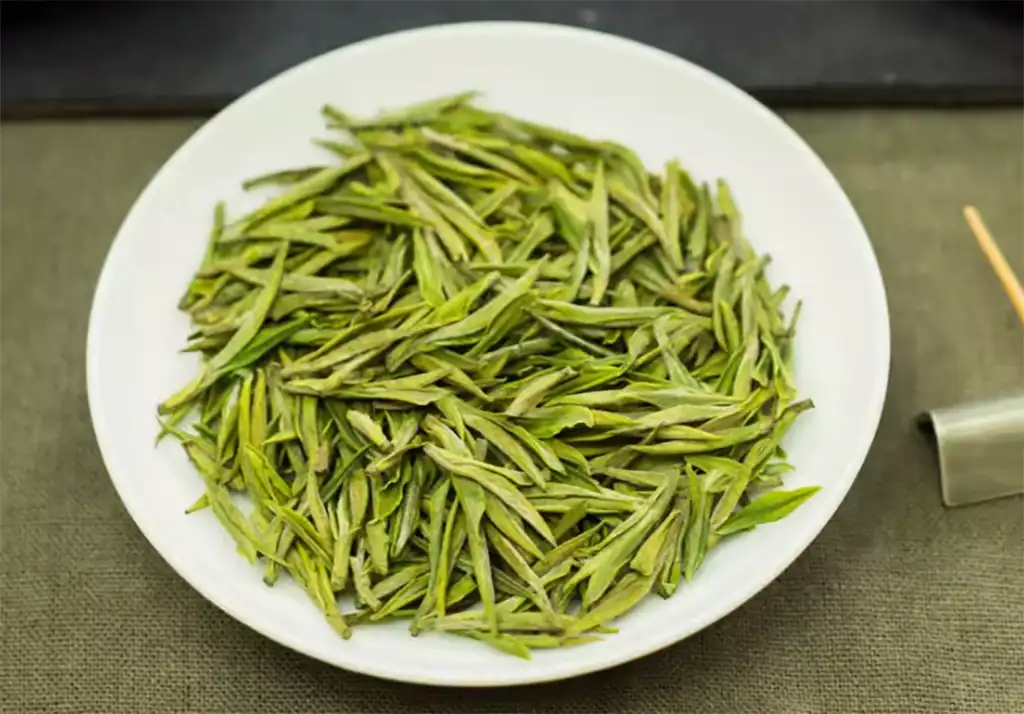
Harvesting: After picking, the tea leaves should be spread out in a cool, shaded place for 1 to 2 hours.
Withering: After the initial withering, the tea leaves are subjected to the Panning process (pan-frying). For optimal results, the leaves are fried at a temperature of 100°C for about 10 minutes. It is crucial not to overheat.
Drying: After the initial frying, let the leaves cool for about 15 minutes. Then proceed with secondary drying at 85°C for about 20 minutes, until the moisture content reaches around 6%.
Low-Temperature Storage: Once drying is complete, store the tea leaves in a 0°C refrigeration unit for about three hours. This step helps achieve the best condition before proceeding to vacuum packaging.
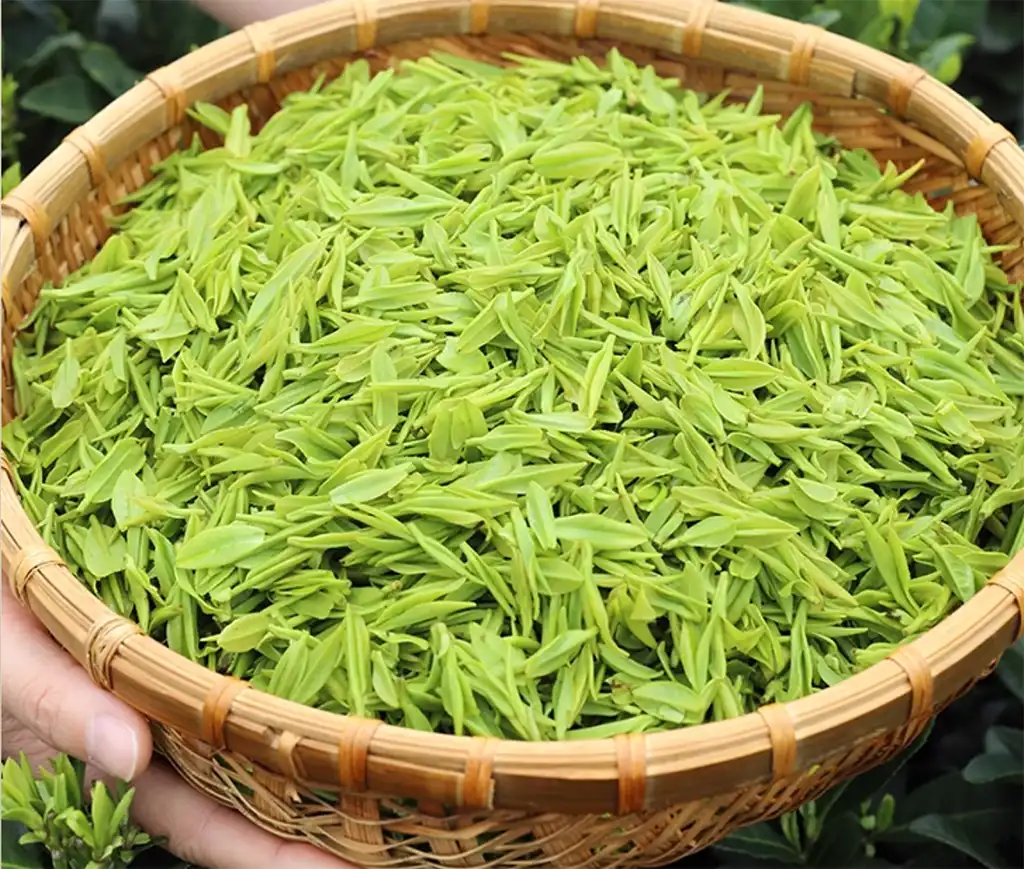
Legendary Benefits of Anji White Tea
- Protects nerve cells, potentially aiding in brain injuries and Alzheimer’s disease.
- Lowers blood pressure by regulating neurotransmitter levels in the brain, helping hypertensive patients.
- Relieves nervous tension and has calming effects.
- Enhances memory, containing trace elements like manganese, zinc, selenium, and tea polyphenols that can improve memory.
- Alleviates menstrual symptoms in women.
- Enhances the efficacy of anti-cancer drugs, with tea polyphenols known to prevent and fight cancer.
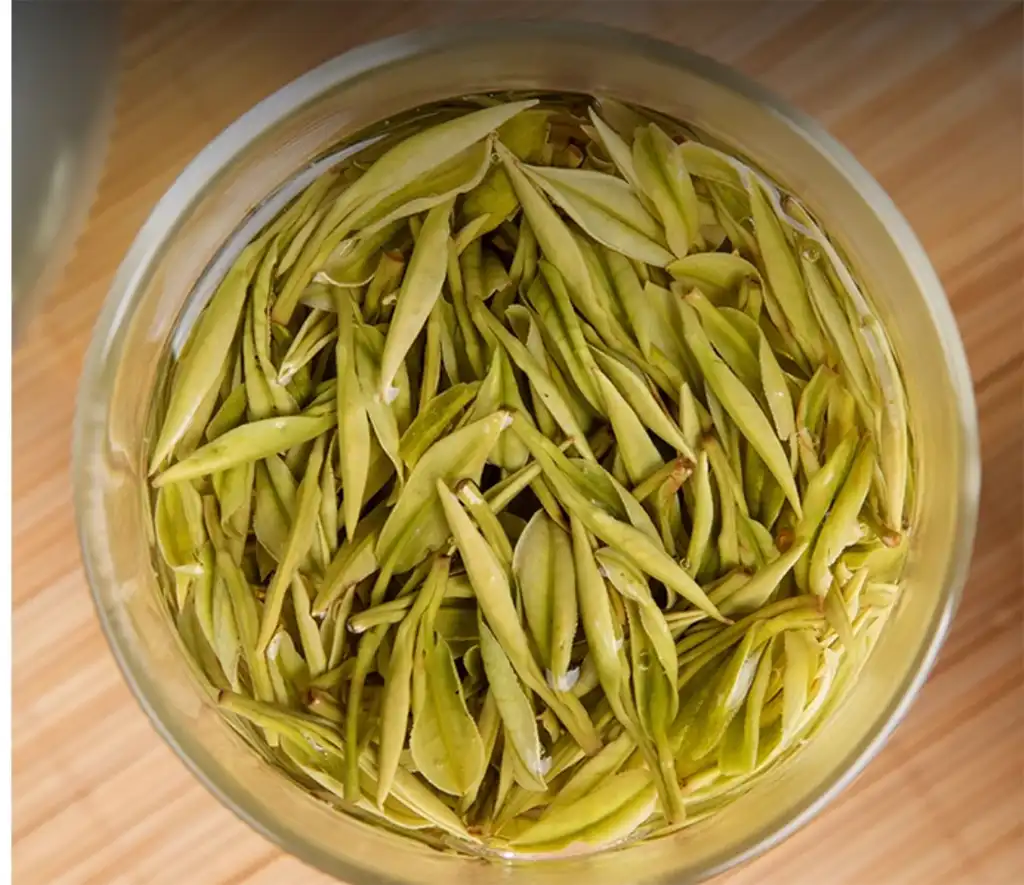
Brewing Method
For brewing Anji White Tea, spring water or mineral water is ideal. The water temperature should not be too high to avoid damaging the tea’s delicate components; 80-85°C is best. Transparent teaware is recommended to appreciate the tea’s shape. First, pour the water, then add the Anji White Tea, allowing the leaves to float before steeping. The tea should steep for about 2 minutes before drinking.
Well-brewed Anji White Tea should have a bright green color, visible white fuzz, and a lasting, high fragrance. The tea leaves the mouth feeling refreshed and hydrated after drinking.
